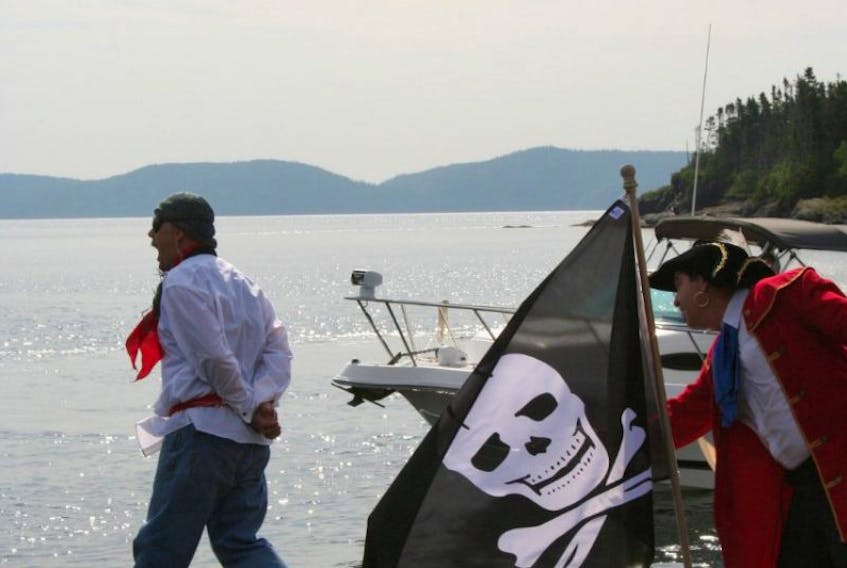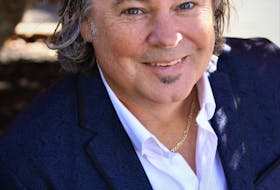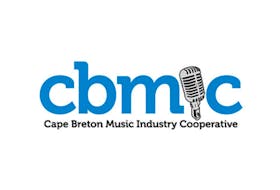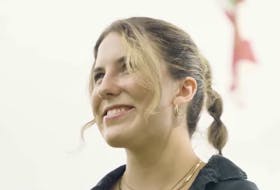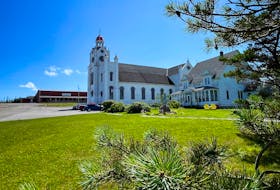“Welcome to Happy Adventure — Newfoundland’s most peaceful community,” the sign reads.
A place name like Happy Adventure suggests a serene, gentle, friendly place to live, and indeed, the town lives up to its title.
Four hundred years ago, however, when it’s said one of the most notorious 17th-century pirates landed in the community, the area might have been a little more rebellious.
Although the town wasn’t officially settled until 1710 — when loggers had winter quarters there — folklore has it that Peter Easton and his crew were the first to stop there, sometime between 1610 and 1612.
Originally a privateer loyal to Queen Elizabeth I and commissioned by her to protect the Newfoundland fishing fleet, Easton became a pirate after her successor, King James I, cancelled all privateer commissions. He attacked Spanish ships for gold and preyed on merchant ships, and his control stretched along a huge portion of the Newfoundland coastline. He established two homes, one in Ferryland and one in Harbour Grace, and is estimated to have recruited more than 1,000 fishermen to man his fleet of 10 ships, some voluntarily, some by force.
After capturing English fishing fleet admiral Capt. Richard Whitbourne and keeping him captive for 11 weeks, Easton persuaded him to ask the king for his pardon.
“The pardon was drawn up and sent to him, but either he never got it or got a better offer somewhere else, because he ended up in the south of France,” said Paul Butler, a local writer and the author of “Easton” and “Easton’s Gold,” two books of historical fiction.
“I think John Guy had to deal with him; he had to get Peter Easton’s OK to do stuff. The legal standing didn’t really matter because he had that much influence, and no one could really stop him.”
During his plundering along Newfoundland shores, Easton’s flagship was The Happy Adventure — hence, according to some, the name of the town, which today has about 250 resident, and a local economy that’s supported by a fish processing plant.
“I don’t know where you’d find the proof after all this time, but it seems highly plausible for the town to be named after the ship,” Butler said.
“There’s nothing unusual about place names being called after a ship, and there’s nothing unusual about people taking the surnames of the captain under whom they would be serving, even if it was a pirate rather than a loyal, legal privateer.”
It’s said a pirate named William Turner was among Easton’s crew, and he was used as the basis for the character played by Orlando Bloom in the “Pirates of the Caribbean” movie series. Turner is a common surname in Happy Adventure.
Earlier this year, while the community was planning celebrations for the 50th anniversary of its incorporation as a town, event committee members decided to take the Easton theory and run with it. In early August, a pirate ship was rigged up, and Easton’s arrival into the cove was recreated, complete with a flotilla of boats and locals dressed as pirates. Upon his landing at the wharf, “Easton” took a French sailor captive, making him walk the plank into the harbour. He handed out eye patches and hooks to the children, and led them on a treasure hunt to a nearby beach, where a chest of treats was buried and a barbecue awaited.
Anniversary celebration committee member Ron Powell acknowledges there are other theories about how Happy Adventure got its name, including that it was named by George Holbrook, a British hydrographer who surveyed Newman Sound in the early 1800s and who sought sanctuary in the cove during a storm. Powell noted, though, there is no proof or written documents to suggest they are true.
What the town does have is a 40-year-old letter from a British trade representative who researched the origin of Happy Adventure in the British archives in London, after having been asked to do so by a local resident.
“There is mention over there of Peter Easton being pursued by French navy ships and he hid in a little cove in the fog up in this bay,” Powell said. “He made a note on his chart of Happy Adventure, whether that’s Happy Adventure here or elsewhere.
“There’s also, down in a place called Barrow Harbour, which is just down the coast from here, an English ship with nine cannons down on the bottom (of the ocean). How it got there, I don’t know, but it’s there, because I’ve scuba dived down there and seen it.”
Whether the Easton connection to Happy Adventure is history or folklore, Powell said it didn’t matter for the sake of the summer’s celebrations.
“It was a celebration of the community, and Easton was thrown in as the theme. We expanded on it for the kids,” he explained.
It’s likely the real origin of place name will never be known — but that just adds to its appeal, Butler said.
“That’s the great thing about it, trying to figure out the reality from the skull and crossbones.”
“Welcome to Happy Adventure — Newfoundland’s most peaceful community,” the sign reads.
A place name like Happy Adventure suggests a serene, gentle, friendly place to live, and indeed, the town lives up to its title.
Four hundred years ago, however, when it’s said one of the most notorious 17th-century pirates landed in the community, the area might have been a little more rebellious.
Although the town wasn’t officially settled until 1710 — when loggers had winter quarters there — folklore has it that Peter Easton and his crew were the first to stop there, sometime between 1610 and 1612.
Originally a privateer loyal to Queen Elizabeth I and commissioned by her to protect the Newfoundland fishing fleet, Easton became a pirate after her successor, King James I, cancelled all privateer commissions. He attacked Spanish ships for gold and preyed on merchant ships, and his control stretched along a huge portion of the Newfoundland coastline. He established two homes, one in Ferryland and one in Harbour Grace, and is estimated to have recruited more than 1,000 fishermen to man his fleet of 10 ships, some voluntarily, some by force.
After capturing English fishing fleet admiral Capt. Richard Whitbourne and keeping him captive for 11 weeks, Easton persuaded him to ask the king for his pardon.
“The pardon was drawn up and sent to him, but either he never got it or got a better offer somewhere else, because he ended up in the south of France,” said Paul Butler, a local writer and the author of “Easton” and “Easton’s Gold,” two books of historical fiction.
“I think John Guy had to deal with him; he had to get Peter Easton’s OK to do stuff. The legal standing didn’t really matter because he had that much influence, and no one could really stop him.”
During his plundering along Newfoundland shores, Easton’s flagship was The Happy Adventure — hence, according to some, the name of the town, which today has about 250 resident, and a local economy that’s supported by a fish processing plant.
“I don’t know where you’d find the proof after all this time, but it seems highly plausible for the town to be named after the ship,” Butler said.
“There’s nothing unusual about place names being called after a ship, and there’s nothing unusual about people taking the surnames of the captain under whom they would be serving, even if it was a pirate rather than a loyal, legal privateer.”
It’s said a pirate named William Turner was among Easton’s crew, and he was used as the basis for the character played by Orlando Bloom in the “Pirates of the Caribbean” movie series. Turner is a common surname in Happy Adventure.
Earlier this year, while the community was planning celebrations for the 50th anniversary of its incorporation as a town, event committee members decided to take the Easton theory and run with it. In early August, a pirate ship was rigged up, and Easton’s arrival into the cove was recreated, complete with a flotilla of boats and locals dressed as pirates. Upon his landing at the wharf, “Easton” took a French sailor captive, making him walk the plank into the harbour. He handed out eye patches and hooks to the children, and led them on a treasure hunt to a nearby beach, where a chest of treats was buried and a barbecue awaited.
Anniversary celebration committee member Ron Powell acknowledges there are other theories about how Happy Adventure got its name, including that it was named by George Holbrook, a British hydrographer who surveyed Newman Sound in the early 1800s and who sought sanctuary in the cove during a storm. Powell noted, though, there is no proof or written documents to suggest they are true.
What the town does have is a 40-year-old letter from a British trade representative who researched the origin of Happy Adventure in the British archives in London, after having been asked to do so by a local resident.
“There is mention over there of Peter Easton being pursued by French navy ships and he hid in a little cove in the fog up in this bay,” Powell said. “He made a note on his chart of Happy Adventure, whether that’s Happy Adventure here or elsewhere.
“There’s also, down in a place called Barrow Harbour, which is just down the coast from here, an English ship with nine cannons down on the bottom (of the ocean). How it got there, I don’t know, but it’s there, because I’ve scuba dived down there and seen it.”
Whether the Easton connection to Happy Adventure is history or folklore, Powell said it didn’t matter for the sake of the summer’s celebrations.
“It was a celebration of the community, and Easton was thrown in as the theme. We expanded on it for the kids,” he explained.
It’s likely the real origin of place name will never be known — but that just adds to its appeal, Butler said.
“That’s the great thing about it, trying to figure out the reality from the skull and crossbones.”

